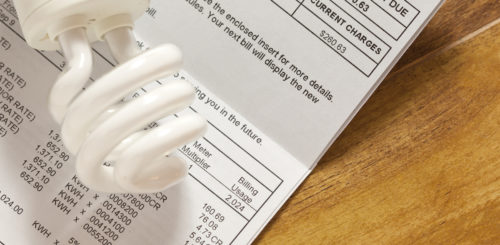studio shot of light bulb and bill

Reality Check: Proposed Clean Energy Incentives Would Save Electricity Customers Billions
Opponents of the Build Back Better proposal have repeatedly amplified the myth that the financial incentives for clean energy will burden Americans with higher electricity costs.
But a new RMI analysis shows the opposite to be true.
Our new model shows that the clean energy tax credits and low-cost financing provisions in the Build Back Better framework can help customers save on electricity costs in a major way while reducing impact on the climate.
These policies would enable utilities to clean up their power supply and save money by doing so. In fact, if these policies are enacted, the faster a utility decarbonizes, the more its customers will save.
What’s in the Build Back Better Act?
The Biden administration’s Build Back Better plan contains several provisions to advance a carbon-free, economically viable energy transition. The first is a set of clean energy tax credits—including the establishment of a $25/megawatt-hour production tax credit for carbon-free generation and a 30 percent investment tax credit for battery storage and transmission over the next 10 years. These expanded tax credits allow for direct pay, a mechanism that will help utilities that have historically been unable to fully capitalize on existing tax credits.
With the new incentives, these companies will be able to deploy a more diverse set of clean energy technologies that can significantly reduce the carbon they emit—all without sacrificing reliability of the electricity they deliver. The second piece, low-cost financing, would allow utility companies to quickly scale the clean energy transition. Combined, these provisions would drive down costs for utilities to use more clean energy—further enhancing savings.
Crunching the Numbers
Already, macroeconomic modeling has shown that rapidly building out renewable energy will stimulate economic growth and create good-paying jobs across the country. From there, RMI set out to determine what the Build Back Better clean energy incentives would mean for consumers’ electricity bills.
Using publicly available data from RMI’s Utility Transition Hub, the Federal Energy Regulatory Commission, the Energy Information Administration, and the National Renewable Energy Laboratory, RMI calculated the effective “crossover” points at which adding more generation from renewable energy can save utility customers money relative to current utility operations. We also incorporated the costs of increased capacity needed from battery storage and transmission for increased renewable energy penetration on the grid.
Here’s what we found: if fully utilized, the clean energy incentives in the Build Back Better plan could help the United States reach its clean electricity goals by 2030, while saving utility companies and customers across the country $9 billion each year. And in key states like West Virginia and Arizona, we found that tax credits and low-cost refinancing could save customers $429 million and $450 million, respectively, each year for the next decade.
See the full results here:
Note: The savings by state reflect the savings to customers of regulated, publicly owned, and cooperative utilities headquartered in the state, and conservatively include only savings from reducing emissions from fossil generation owned by those utilities.
Win-Wins for Savings and Climate
These findings may seem surprising, yet they reflect how new tax credits and clean energy financing benefit both utilities and ratepayers. The clean energy transition is already under way. The real question is whether it will progress fast enough. The clean energy provisions in the Build Back Better plan offer us an opportunity to rapidly remake our electricity sector, while providing economic benefits to utilities and American households alike.
